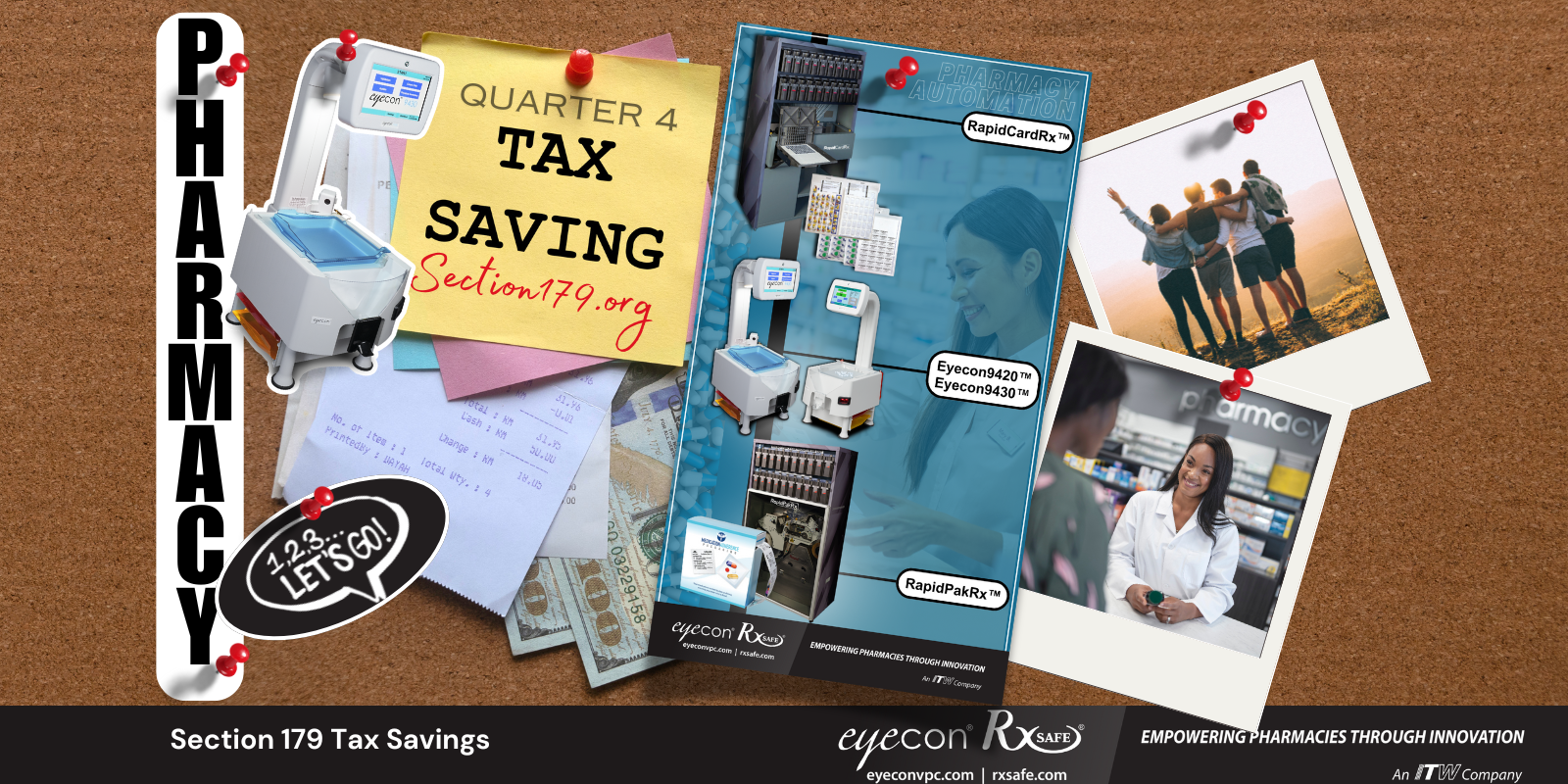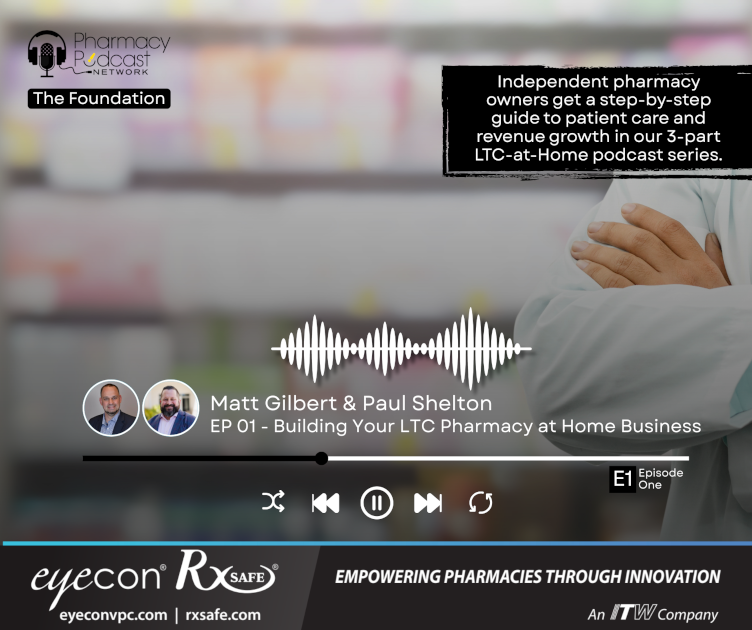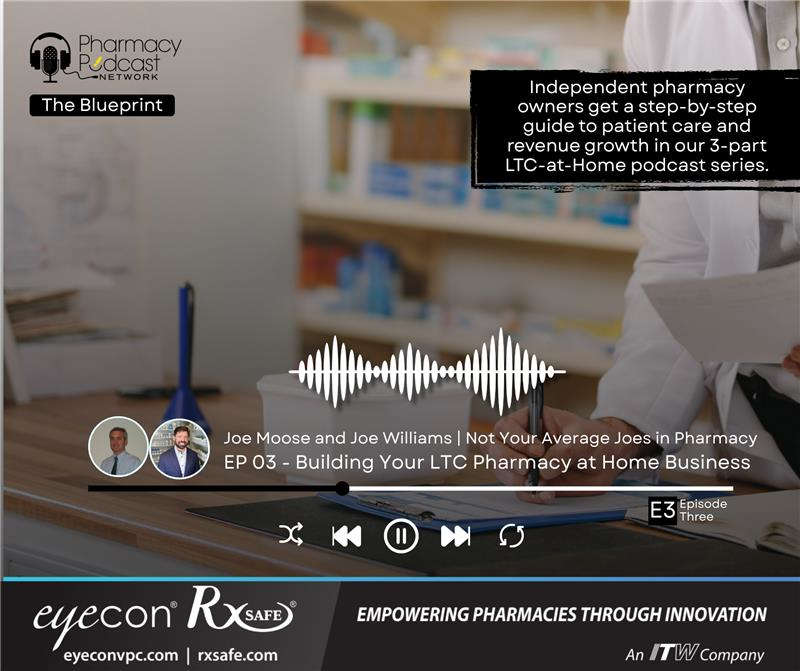As you may have heard, medication synchronization (med sync) is a growing program among independent pharmacy owners. Not only does it benefit patient health, but med sync has been shown to have a positive impact on pharmacies as well. Pharmacies with robust synchronization programs can benefit through lower DIR fees, reduced inventory levels and decreased operational expenses. But how do you know if medication synchronization will have a positive impact at your pharmacy? We’ve done our homework to help you decide whether medication synchronization is the right fit for you.
Keep Track of Regular Patients
Figuring out if med sync is a good match for your pharmacy is simple. First, keep track of how many patients your pharmacy serves that receive medication on a monthly basis. Some good candidates for the program are patients with chronic diseases, such as high blood pressure or diabetes, who require medications each month to manage their conditions. Once these patients are determined, the next step is to track how many prescriptions each patient receives per month. Find patients who routinely receive a high number of prescriptions, as they are good candidates for the medication synchronization program.
Once you have created a list of high volume patients, pick out a handful of patients to start the program. Selecting a few will allow your pharmacy to get adjusted to the new program, and allow for any problems to be quickly resolved. To make sure the program runs smoothly, you can even choose to start with patients who have a specific chronic disease. It will help keep patients involved accountable and on track when the program first begins. This will increase the success of your med sync program, and keep patients properly adhering to their medications.
Improving the Patient Experience
Another factor that you may want to consider is how much time it takes your pharmacy to fill prescriptions. Are you currently satisfied with the time it takes to fill prescriptions on busy days? What if it is for a patient that has a high number of prescriptions? If you think your pharmacy needs to improve prescription fill time then medication synchronization can be a good addition.
With medication synchronization, your staff can anticipate which prescriptions need to be filled and can fill them during down time. This will help improve patient interactions as pharmacists & technicians will be less rushed, which will allow them to build personal connections with patients. Building relationships with patients allows pharmacists to learn more about the patient’s habits, enabling pharmacists to make appropriate recommendations such as which medications are more effective or if a patient can benefit from a program. As many independent pharmacists know, with the rise of technology and new online services, differentiating their pharmacy by providing the best customer service is important to continue bringing patients in through the door.
Improving Your Prescriber Relationships
With the pharmaceutical industry facing challenges brought on by PBMs, and new e-commerce healthcare companies changing patient expectations, focusing on providing a value-based system of care is important in helping independent pharmacies remain competitive.
Med sync can be a great program to help improve prescriber relationships, and improve your quality metrics. Quality metrics are a new way that pharmacy owners are able to measure the success of the outcome of their care, instead of the traditional focus of how many patients are being served at their pharmacy. Quality metrics focus on medication safety and medication adherence. Scoring well in quality metrics is beneficial for independent pharmacy owners, because some PBMs are adding pharmacies to preferred networks based on the ratings they receive. This is crucial for some pharmacies because being a part of a preferred network can help drive more patients to their stores.
Shrink Abandoned Pills, Boost Profitability
Some pharmacies have no idea that they are constantly losing revenue due to a large number of abandoned pills each month. Do you know how many abandoned fills or slow fills cost you? This is an issue that many pharmacists face when caring for patients with chronic diseases. Oftentimes due to the number of prescriptions that a patient is required to take, forgetting to take and refill a prescription is all too common and can have a negative impact on patient health.
With increasing DIR fees, boosting profitability is an important goal for independent pharmacies. An easy way to add more revenue into your pharmacy is by improving medication adherence. Med sync will help improve compliance, decreasing the number of fills that are abandoned. Coordinating a monthly pick-up helps ensure patients receive their monthly medication and allows a pharmacy to prepare and order the adequate amount of inventory.
Since a pharmacy can anticipate when a patient needs a new prescription filled, it is easier for the pharmacy to order smaller batches of medications, which prevents increased inventory costs as well as avoids expired medications. If your pharmacy is looking for a way to increase profitability, med sync can decrease inventory costs and increase the number of prescriptions that are filled each month.
Pharmacists and pharmacy owners share their wisdom
We asked several pharmacy owners how/when they knew they were ready to begin med sync. Was it patient volume, operational expenses, DIR fees, inventory levels or a combination of all these factors? Or something else? Was med sync something they felt felt drawn to, or "pushed" into? When did med sync become a real, concrete goal... as opposed to just an idea? Below are their responses:
Abhijit Gudivada, D-Rex Pharmacy
"D-Rex Pharmacy has had a med sync program for years at the Jonesville location, but last year we tried to really work hard at setting it into stone and making it fit within workflow. I think it was really a combination of those factors (volume, expenses, DIR fees, inventory) that really appealed to us and pushed us into med sync. We had always heard from NCPA and other pharmacies in general about the benefits about having a med sync program, and once we analyzed our own pharmacy and looked at the possible benefits we realized it was definitely something that we had to get running within our workflow.
In terms of the possible benefits, there were a lot of patients who got over 10 prescriptions and would often come in multiple times a month; there were also patients who got special ordered medicines that we were keeping on the shelf for longer than necessary or having to partial medicines for patients. Additionally, with prescription refills consisting of 50% of a typical day's volume, we saw the benefit in having the ability to control our workflow better so that we could anticipate when patient's refills would be due and not have to be rushed all the time when someone dropped off, for example, 15 prescription bottles for us to refills.
Additionally, learning more about DIR fees and the impact adherence scores have on the pharmacy's DIR fees was also a big contributing factor into our decision. If we could get patients synced and get their medicines filled on time, that could greatly help assist in decreasing the pharmacy's DIR fees.
To summarize, having a med sync program really was something that we felt drawn to - there were so many benefits in so many areas of the pharmacy (inventory management, more efficient workflow, more satisfied customers, better adherence ratings and lowered DIR fees) that it was just something that felt like a natural step for the pharmacy to take. With the many benefits that are possible affecting things that impact pharmacies of every size, it is something that I think every pharmacy needs to take, regardless of how small or large the pharmacy is."
Kyle Lomax, Southern Pharmacy
"Our sync program has been around for over 6 years. The main reasons for us to begin syncing patients were inventory control and move control over our dispensing. Over the past few years as DIR fees have increased, sync has become more important in reducing DIR fess for EQUIPP scored measures.
We initially had a goal of 40%, but have wanted to move closer to 60% over the last few months. It almost a necessity at this time for our business.
Sync is our foundation and everything else builds on top."
Greg Marks, Medical Center Pharmacy
"We started doing med sync a long time ago, probably 2011-12. Originally it was a way to get a head start on our problem patients who would show up with 10 prescriptions and want to wait for them at the most inopportune time. It allowed us to order meds that we were out of instead of owing the patient since we were able to start a few days in advance.
Med sync gave us a way to reduce delivery trips to our patients by getting everything together. Now with DIR fees the way they are, we are using med sync to make sure that our patients fill their meds on time to keep our DIR fees lower. Now I feel it is something that we have to do if we are going to survive in the current climate."
Michele Steffey, Medicine Shoppe #1675
"We have been doing SyncRx for about 5 years now. It is wonderful! We were introduced to the program at a PDS conference. We contemplated it for a year and at the next PDS conference, we committed to starting it.
There were some rough times, especially when we got to around 25% of prescriptions, it seemed to be too difficult to continue. We had frustration with staff at all levels, but we worked through it, because we were warned about the difficulties to expect.
Once we got to 30-35% of patients on med sync, the frustration stopped and we have been elated since then. The whole process takes so much daily pressure off the staff. Yes, the SyncRx processing date is intense, but the day after a holiday is no longer a 'day from hell' ... it is all spaced out better."
Joe Williams, Brisson Drugs
"I bought a store back in 2015, and it was a really low volume store and I couldn't sleep at night cause I was scared I couldn't pay my bills. So I needed to know when patients were going to be coming in to get their medicine filled, and it allowed me to handle cash flow a lot better by synchronizing them and telling them when their medicine was going to be ready again."
The next thing that medication synchronization did was when I was able to look at it in terms of sync, knowing the day that I was filling it, I then knew that I could look at the day that I needed to order it. So I would wait until the first statement period, of the time that they were going to be picking up the prescription and I would wait until the first day of that period to order it. So from a cash flow perspective, sync is just the only thing that does make sense. So when I first got started, I had "old school" QS/1, and at the time, they didn't have a thing function. So I bought a big old desktop calendar. I started writing down everybody's name on the day that I was going to fill all their meds in the next month. Then I would write down at the beginning of the statement period for whichever wholesaler their expensive drugs belonged in, I would write down the item number on the first day of that statement period so that I could order it on that day.
So that helped me with cash flow. And then when I got PioneerRx as my pharmacy management system, I was able to just take all those patients and just roll them into the sync program. And it just kind of just kept growing from there. It made it a hundred times easier because I was doing every bit of it manually with a desk calendar before. And that calendar, every box would be filled up. And then on Mondays, I'd have to use the Sunday before just because I had so many patients that I needed to run on Mondays. I'd have to use the Sundays box to write all their names down. So, I was really happy when I could finally afford PioneerRx.
From there, it just kept growing. And then I started realizing that the 'powers that be' were creating these networks that were utilizing performance metrics. So we started looking at every patient who was on a statin with diabetes, or who was on any of the medications that pertain to those performance measures. And those patients all get automatically enrolled into sync, whether they're on one med or 50 meds, they are going to be in sync cause we going to fill it every 30 days. Because if you don't, it's going to cost you more in the long run. Right. So sync is just, it's a no-brainer. If you're not syncing as a pharmacist right now, you better to start calling brokers, because your days are numbered.
The good thing is, I understand sync on such a deep level now because I had to do that, because I was managing it manually. So it made it that much easier when I got PioneerRx to help me. I understood it inside and out. If I had to go back and do it today, I'd just get a desktop calendar, and put one at every workstation. Sync is something you just have to do now. You don't have a choice."
Simplifying the Med Sync Process
If you have decided that medication synchronization is a good fit for you, but think that filling multi-med prescriptions is time consuming, you should consider the addition of adherence strip packaging to your pharmacy. With the help of the RapidPakRx, your pharmacy can easily fill multi-med prescription pouches in less time. If you would like more information on the strip packaging automation technology of the RapidPakRx, call one of our representatives at (877) 797 -2332 or visit our product page.


.png)






